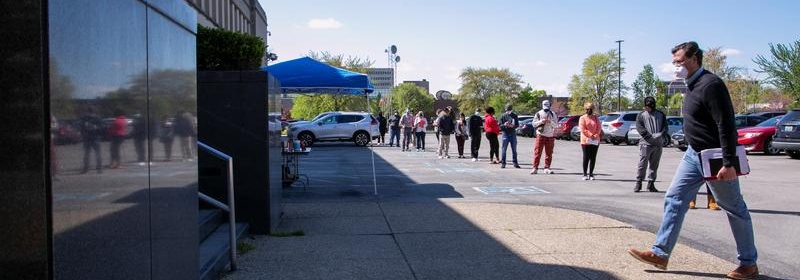Black unemployment setback shows Fed's challenges targeting 'broad and inclusive' job growth

(Reuters) – Attaining its goal of maximum employment has always been a tall order for the Federal Reserve but broadening the scope of that objective to one that is also “broad and inclusive” has made the task tougher still, with Friday’s payrolls report standing as a case in point.
Job gains in August were far more meager than expected here largely due to the surge in coronavirus cases. And even though the unemployment rate fell to a pandemic-era low of 5.2%, it did not drop for everyone. The jobless rate rose for Blacks – to 8.8% from 8.2% – and they were the only major racial demographic group to see an increase.
That figure on its own creates tough optics for the Fed as it approaches a consequential meeting this month, especially as other data from the Labor Department suggest the Black employment recovery from last year’s recession continues to progress – by some measures more so than for whites.
Black workers continued to notch strong gains in employment and in the labor force participation rate this year, while it appears improvements may be moderating for white workers.
For example, the share of Black people who are either working or looking for jobs, or the labor force participation rate, rose in August to 61.6% and is now equal to the participation rate for white workers – a metric where Black workers have historically lagged.
And the share of Black people who were employed in August, known as the employment to population ratio, reached 56.2%, up from 54.7% in January. This was slightly more than the gains seen for white workers. “That’s an unambiguous improvement” for Black workers, Nick Bunker, an economist with Indeed Hiring Lab said in an email.
At 58.8%, the employment to population ratio for white workers is up from 57.9% in January.
Still, the trends in the unemployment rate are much less straightforward. After last month’s increase, the jobless rate for Black workers is still at crisis-era levels and is down just 0.4 percentage points from the start of the year. The unemployment rate for white workers, at 4.5%, is below the national unemployment rate and down by 1.2 percentage points from January.
“Where that rise in unemployment came from is up for debate,” said Bunker, noting it could have been driven by a rise in Black people trying to find work but not succeeding, or by an increase in the number of Black people who became unemployed.
Policymakers will need to watch what happens in the coming months as the U.S. labor market works through the effects of multiple shifts, including cuts to unemployment benefits, the Delta variant’s drag on spending and travel and persistent challenges with childcare here and schooling here.
If the slowdown in hiring persists, that may not bode well for Black workers, which often face the deepest losses during downturns and the slowest recoveries, said Daniel Zhao, a senior economist with Glassdoor.
“Black workers are often first to be fired and last to be rehired, so if the recovery slows we might expect to see that the impact is more on Black workers,” Zhao said.
Source: Read Full Article
